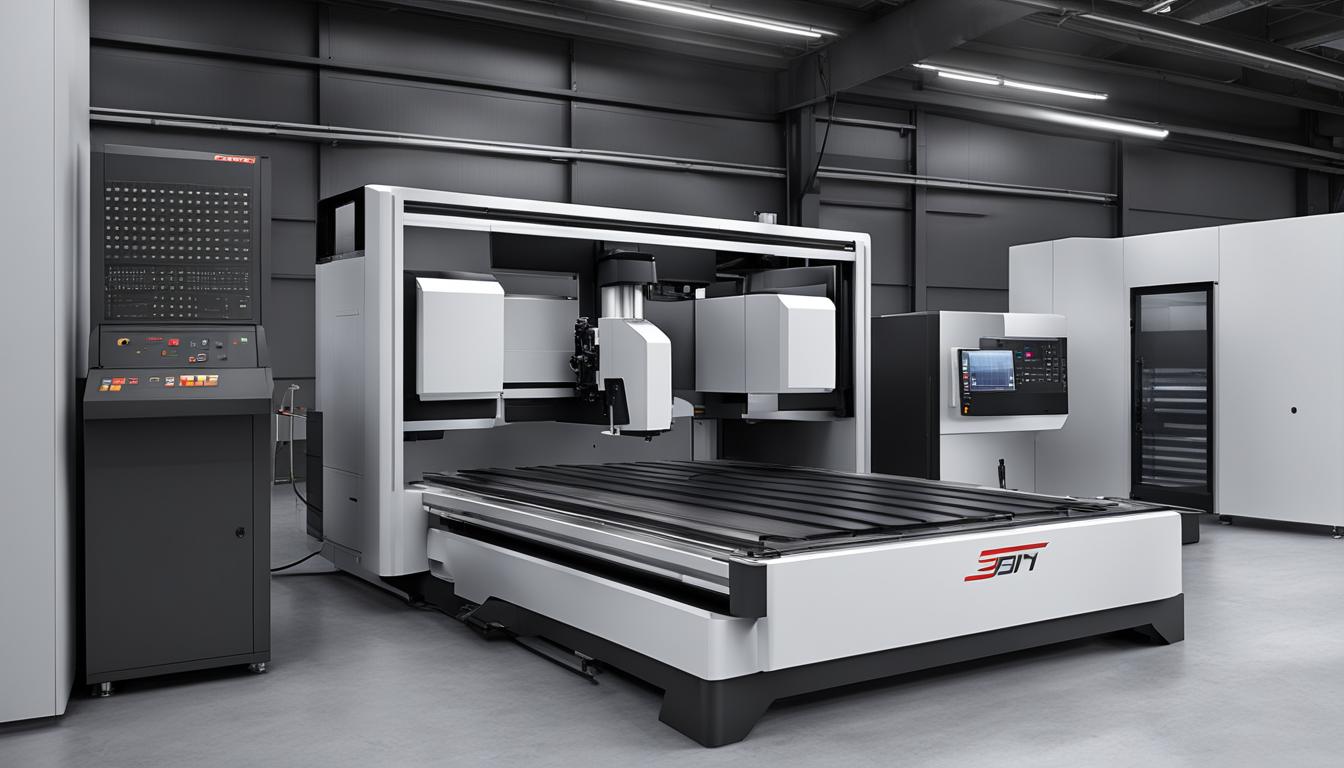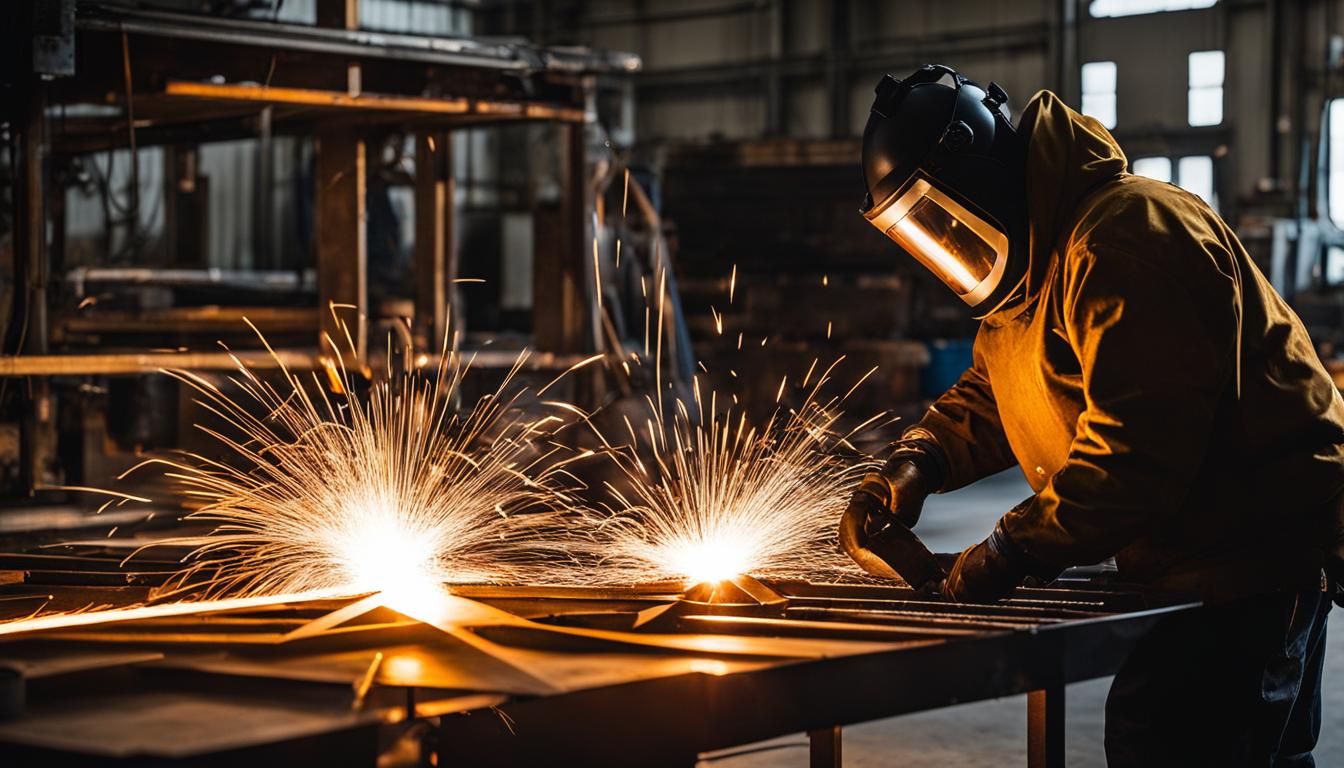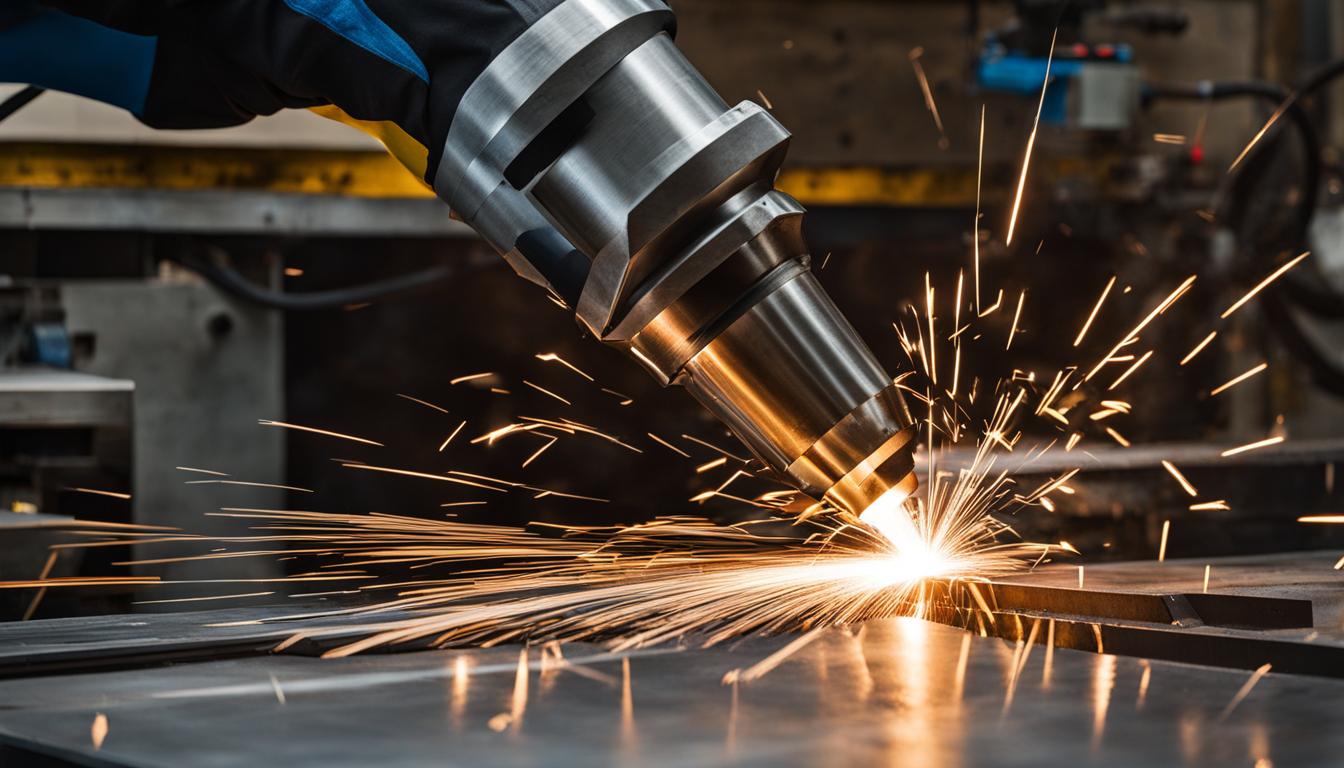Building and operating your own CNC plasma table involves several key steps and considerations. Start by designing the table frame, typically using sturdy materials like steel or aluminum, ensuring it’s large enough to accommodate your intended cutting projects. Next, install linear rails and bearings for smooth motion in the X and Y axes, and incorporate a Z-axis mechanism for height control.
Choose a suitable plasma cutter and integrate it into the system, along with a CNC controller and stepper motors to drive the movements. Install limit switches for safety and homing purposes, and set up a water table or downdraft system for fume and debris management. Configure the control software, such as Mach3 or LinuxCNC, to interface with your hardware components. Calibrate the machine carefully, ensuring precise movements and accurate cuts.
Learn to create and import CAD designs, convert them to G-code, and operate the table safely. Regular maintenance, including cleaning and lubricating moving parts, is crucial for optimal performance. With patience and attention to detail, you can build a custom CNC plasma table that meets your specific cutting needs and opens up new possibilities for metalworking projects.
- Building your own CNC plasma table is an affordable and rewarding project.
- OpenBuilds offers the necessary resources and materials for the build.
- Proper assembly and calibration are essential for accurate and precise cuts.
- A DIY CNC plasma table provides superior knowledge and troubleshooting capabilities.
- Customize your plasma table to meet your specific needs and projects.
Project Overview
Building a DIY CNC plasma table is an exciting venture that enables you to achieve precise and customized cuts on various materials, such as mild steel. Unlike other machining methods, plasma cutting does not require extensive pre-planning, making it a flexible and efficient technique for DIY metal fabrication projects.
To bring your DIY plasma table to life, you’ll need CAD/CAM software, which plays a crucial role in generating the necessary G-code from a .DXF file. With the right software at your disposal, you can quickly convert your design into machine-readable instructions and begin the cutting process.
While affordable CNC plasma tables can be purchased from the market, embarking on a DIY project allows you to gain superior knowledge of the machine and its inner workings. This knowledge empowers you to troubleshoot and solve any issues that may arise during the fabrication process. Additionally, building your own CNC plasma table brings a sense of satisfaction and accomplishment, as you create a tool that meets your specific needs and preferences.
Throughout the project, precision cutting techniques are employed to ensure clean and accurate cuts. These techniques, when combined with the right CAD/CAM software, enable you to unleash your creativity and transform raw materials into intricate and precise designs.
Resources and Bill of Materials
To build your DIY CNC plasma table, you will need various resources and materials. OpenBuilds offers a Lead Machine kit and a CNC Electronics Bundle, which provides all the necessary components to get started on your CNC machine design. These resources include:
| Resource | Description |
|---|---|
| Lead Machine Kit | A comprehensive kit that includes linear rails, connectors, wheels, and limit switches. This kit forms the foundation of your CNC plasma table and ensures smooth and precise movement. |
| CNC Electronics Bundle | This bundle contains all the electronics needed to control your CNC machine. It includes stepper motors, drivers, and a controller board to power and move the machine. |
In addition to these specific resources, you will also need a range of DIY fabrication tools such as drills, wrenches, and wire cutters. These tools will be essential for assembling and fine-tuning your CNC plasma table.
The Bill of Materials (BOM) provided by OpenBuilds gives you a detailed list of all the parts and quantities required for the build. This allows you to source the materials individually, giving you flexibility in choosing the suppliers and ensuring that you have all the necessary components for your metalworking projects.
With these resources and materials, you will be well equipped to embark on your CNC machine design journey and create precision-cutting techniques for your DIY fabrication projects.

CNC Table Assembly
Building the CNC table is a crucial step in constructing your DIY CNC plasma table. The assembly process follows the well-documented Lead Machine design provided by OpenBuilds. It involves both mechanical and electrical aspects and requires careful attention to detail.
To ensure the smooth operation and accuracy of your CNC table, here are some essential tips and considerations:
1. Minimize Lead Screw Play
During the assembly process, it’s important to ensure that the lead screws have minimal play. This will help maintain precise movement and prevent any unwanted backlash. Check the alignment and tightness of the lead screws to achieve optimal performance.
2. Square Axes Alignment
Proper alignment of the axes is crucial for accurate cutting and positioning. Check that the X, Y, and Z axes are square to each other using a square tool. This ensures that your CNC table operates as intended without any misalignment issues.
3. Stepper Motors and Drives Installation
Install the stepper motors and drives according to the manufacturer’s instructions. Securely attach them to the appropriate parts of the CNC table, ensuring proper alignment and connection. This step is vital in ensuring precise movement and control of the machine.
4. CNC Cutting Safety Measures
When assembling your CNC table, prioritize safety. Follow these safety measures to protect yourself and promote a secure working environment:
- Always wear appropriate personal protective equipment (PPE), including safety glasses, gloves, and ear protection.
- Ensure all electrical connections are properly insulated and protected.
- Securely mount all components to prevent any unforeseen accidents or hazards.
- Regularly inspect and maintain the table and its components to ensure optimal performance and safety.
By following these DIY machining tips and taking the necessary safety precautions, you’ll be on your way to building a functional and safe CNC plasma table for your home workshop.
The Floating Head
Plasma cutting is a 2D process that does not require a motorized Z-axis for depth control. However, using a floating head can automate the initial height setting of the torch, improving precision and efficiency. This assembly includes a switch strategically placed at the bottom of the nozzle to detect when the torch is close to or touching the material.
By incorporating a spring-loaded carriage, the floating head is designed to prevent damage to the torch if the Z-actuator continues to force it downward after contact. This mechanism ensures consistent and reliable cutting results, allowing for seamless transitions between different thicknesses of materials.
Implementing the plasma cutter setup with a floating head can significantly enhance the cutting process, particularly when working with intricate designs or precision projects. It simplifies the setup and eliminates the need for manual adjustments, saving time and minimizing errors.
To visualize the floating head assembly, refer to the following diagram:
Torch Holder
The torch holder is an essential component of the CNC plasma table, as it securely holds the plasma cutter in place during operation. Depending on the type of torch used, there are various methods available for attaching the torch holder.
For optimal results, it is recommended to use a machine torch, as it simplifies the attachment process to the floating head. Machine torches are designed specifically for CNC plasma tables and offer better stability and alignment.
If you prefer to use a handheld torch, there are alternative options available. One method is to use zip ties to secure the torch to the floating head. This allows for flexibility and adjustability while maintaining a secure connection.
Another option is to use 3D-printed holders specifically designed for handheld torches. These holders can be customized to fit your specific torch model, ensuring a tight and secure grip.
Regardless of the type of torch holder you choose, it is crucial to incorporate a breakaway mechanism. This mechanism allows the torch to break away from the holder in the event of a collision, preventing damage to both the torch and the CNC plasma table.
Magnetic breakaway torch mounts are popular options for achieving this functionality. These mounts use magnets to hold the torch in place during normal operation but allow for easy detachment in case of accidental collisions. This added level of safety ensures that your CNC plasma table and torch remain protected.

| Torch Holder Options | Compatibility | Advantages |
|---|---|---|
| Machine Torch | Recommended for CNC plasma tables | Simplified attachment to the floating head |
| Zip Ties | Handheld torches | Flexibility and adjustability |
| 3D-printed Holders | Handheld torches | Customizable and secure grip |
| Magnetic Breakaway Torch Mounts | All torch types | Enhanced safety and protection |
Building the CNC Gantry
The CNC gantry serves as the moving component of the machine, responsible for carrying the Z-axis and the floating head. Constructing a sturdy and reliable gantry is essential for smooth and precise movement during CNC operations. Two popular choices for gantry construction are square tubing and aluminum profiles, both offering durability and stability.
When it comes to achieving optimal performance, it is recommended to incorporate HiWin or THK linear rails. These high-quality rails ensure smooth motion and enhanced precision during operation. Additionally, utilizing belt reduction drive assemblies can further improve the gantry’s overall performance, offering increased control and enhancing movement accuracy.
Choosing the right motors for your CNC gantry is crucial. It is important to select motors that are compatible with the weight and size of the gantry. Factors such as potential speed and accuracy requirements should also be taken into consideration when making this decision. Ensuring proper motor selection will guarantee optimal performance and longevity of the CNC gantry.
Table Base and Cutting Surface
When building your DIY CNC plasma table, the table base and cutting surface are essential components to consider. These elements not only provide a stable foundation but also play a crucial role in the overall functionality and longevity of your machine.
You have the flexibility to choose from various materials such as steel tubing or aluminum profiles for constructing the table base. These materials offer durability and rigidity, ensuring that the table can withstand the demands of metal fabrication projects.
The cutting surface, on the other hand, should be designed as a removable assembly. This allows for easy maintenance and the insertion of a water pan for effective dust and smoke control during the plasma cutting process.
Components like flat bars and rectangular tubes are commonly used in the construction of the cutting surface. These provide stability and support for your workpiece, ensuring precise and accurate cuts. Additionally, incorporating slide rails and pulleys enables smooth movement and positioning of the cutting torch, further enhancing the overall performance of your CNC plasma table.
Properly designing and fabricating the table base and cutting surface is essential for the success and longevity of your DIY CNC plasma table. Take the time to carefully select the materials and components that will best suit your specific requirements, ensuring the high-quality construction necessary for optimal performance and reliability.
Calibration and Test Cuts
Once the DIY CNC plasma table is assembled, it is essential to calibrate the machine to ensure accurate and precise cuts. Calibration starts with squaring the gantry, ensuring that it is perfectly aligned and moves smoothly along the X and Y axes. This step is crucial to maintain 90-degree angles and achieve the desired accuracy in your projects.
Following the instructions provided by the motor control system is essential for successful test cuts. Properly wiring the plasma cutter, following the manufacturer’s guidelines, ensures that it functions correctly and cuts through the material effectively. It’s a vital step to ensure safety and prevent damage to both the machine and the operator.
To optimize the CNC plasma table’s performance, it is recommended to complete test cuts on various materials. This will help fine-tune the cutting settings, such as feed rate and arc voltage, based on the specific material being worked on. By experimenting and adjusting these parameters, you can achieve precise and clean cuts, ensuring the desired result for your DIY machining projects.
